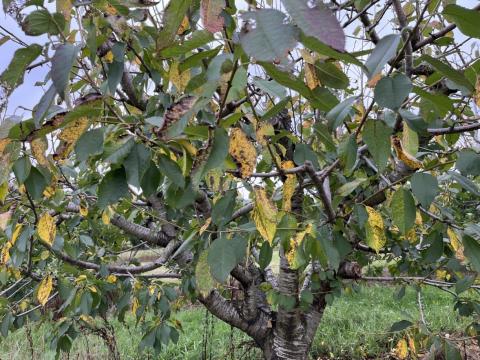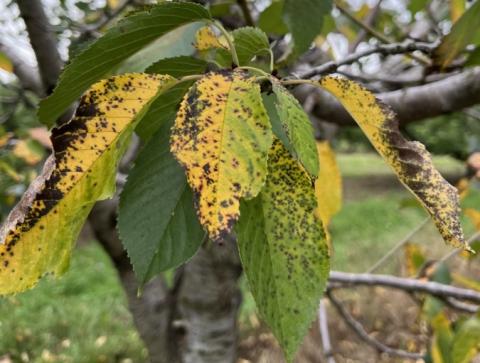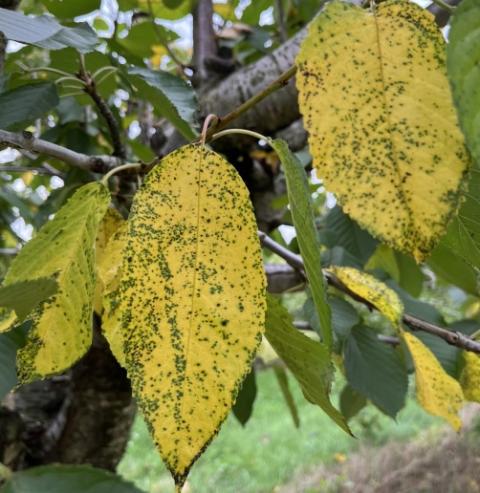Cherry leaf spot was observed during a UNH Extension farm visit in summer 2023, which brought our attention to the fact that leaf spot could be a problem in cherry production. Leaf spot is one of the important fungal diseases on cherry trees in the United States. The disease mainly affects the leaves; the pathogen will cause early defoliation under severe infection, which affects fruit maturing and color development.

Fig. 1. Brown spots on the surface of cherry leaves.


Fig. 2. Infected cherry tree leaves have dark brown lesions; leaves turn yellow before dropping prematurely.
Symptoms
Initially, the lesions are small, circular purplish spots on the upper leaf surface. Spots enlarge as they grow older, normally merge, and turn brown and black (Fig. 1). The typical symptom is the yellowing of older leaves with brown spots on the tree (Figs. 1 and 2). Spots sometimes occur on fruit stems, which cause fruit to drop.
Causal agent
The fungus causing cherry leaf spot is Blumeriella jaapii, which can infect both cherries and plums.
Life cycle
The fungus can overwinter in diseased leaves on the ground. In early spring, the spores (ascospores) will mature and spread to young and expanded leaves where infection takes place through the stomates (air pores) on the undersides. High humidity and rainfall increase the spread of the disease. Under wet conditions and with temperatures between 60 and 68 ºF (15 and 20 ºC), symptoms will appear around/within five days. Under dry conditions and lower temperatures, symptoms will appear for as long as 15 days. Once lesions have developed, secondary or summer spores (conidia) are formed on the underside of the leaf and cause multi-cycle infections. Conidia are spread to other leaves by splashing raindrops. Serious leaf spot infection usually occurs in years with continued rains throughout late spring and summer.
Management
- Sanitation is important for the control of cherry leaf spots. The fungus can survive the winter in fallen leaves; therefore, removing leaves will reduce disease spores in the next spring. Also, applying nitrogen to the leaves in the fall will enhance the decomposition of the fallen leaves.
- Apply fungicides from petal fall and continue through mid-summer. Fungicides with an active ingredient of Myclobutanil or Captan will protect leaves from infection. To avoid fungicide resistance, Myclobutanil and Captan should be alternated. Fungicides with an active ingredient of copper may provide limited protection. For the current labeled fungicides, please refer to the New England Fruit Tree Management Guide.